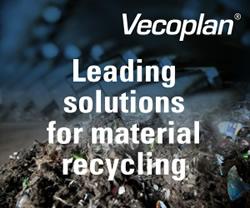There is a rule in communications: If you don't manage your message, someone else will. Each day people throughout your organization have conversations with a variety of people outside the organization.
BRAND MESSAGING
Tim Kubista | Elements
| There is a rule in communications: If you don’t manage your message, someone else will. Each day people throughout your organization have conversations with a variety of people outside the organization. |
|
By Tim Kubista, Elements |
|
Ask any six people in your company the following question: What does our company do? If your employees don’t answer consistently, your brand is likely weak and diluted. Identifying key messages and communicating those messages throughout the organization, and then externally, will improve the productivity of your communications and strengthen your brand. When the organization communicates with consistent messages and a unified voice, you will earn trust. Trust is the foundation of a strong brand.
There is a rule in communications: If you don’t manage your message, someone else will. Each day people throughout your organization have conversations with a variety of people outside the organization. They are speaking with customers, prospects, suppliers, investors, banks, the media and more. Each of these conversations is an opportunity to build or erode your brand. Brand is psychological. It is the accumulation of interactions and experiences with your company. The sum of the experiences someone has with your company determines how they feel about your brand. This in turn establishes preference for your brand, for better or worse. If you have not identified and communicated your key messages throughout the organization your employees will create their own. On a daily basis employees have conversations with people outside the organization and they feel compelled to communicate as best they can. These messages may be aligned with the organization’s goals but often they are not. Inconsistent messages will erode your brand, as well as weaken the effectiveness of your communications. Establishing key messages is not a complicated process. It is as simple as identifying the core facts about your company and its products and services, particularly those that are critical that your audience understand. Thought must also be given to any misinformation that currently exists about the company or its products and services. For example, if the industry incorrectly believes your company has been acquired by another firm, one of your key messages will be that you are an independently-owned, private company. The statements you create will be used as the foundation for external communications. They will guide your people as they communicate outside the organization. Your marketing and communications team will also use them as a guide to ensure key facts are communicated as they create advertising and marketing materials. The key messages establish what needs to be communicated, not how. Answer the following questions to begin identifying your key messages:
When you have the facts laid out you can draft a series of well-written statements that communicate these facts. Keep in mind that it is often more important to focus on differences between your company and the competition than the similarities. The statements should be simple and to the point. They don’t need to be creative, just true and organic. You will likely have six to twelve key messages. Next you need to communicate the newly identified messages throughout the organization. Reinforce these messages until they become part of the organization’s daily conversations. This is a process, not an event. In other words, don’t make the mistake of sending a company-wide email or holding one meeting and expect to be successful. Success will require continuous reinforcement of the key messages and the purpose they serve. Reinforcement should be frequent, one-on-one and company-wide. It is best initially to hold company-wide meetings or a series of departmental meetings. The meeting should be lead by the CEO or a member of the senior staff. It is important to communicate the purpose of establishing these messages and then review them to ensure understanding. Let employees know that they should use their own words. The goal is to communicate a consistent message, not have a bunch of robots regurgitating someone else’s words. The identified key messages should be reaffirmed and reinforced by senior leadership on a regular basis. This can be accomplished by providing feedback to employees as they use, or fail to use, these messages. Senior leadership should review messages communicated at trade shows, sales calls, customer visits, telephone conversations and email. Staff meetings are also an opportunity to reinforce these messages by recognizing those that have embraced the effort and sharing success stories of those that communicate the messages effectively. The key messages should be part of the company’s marketing and public relations efforts. Your marketing team will use these messages as a foundation for what needs to be communicated. They will identify how to communicate the messages in a creative, meaningful way. Identifying and communicating your key messages – internally and externally – is more important today than ever. The renewable energy business is growing and changing at a rapid pace. As more and more players enter the industry we are confronted with an ever-growing array of messages. In such an environment is it critical that your messages be consistent and on point. Doing so will improve the productivity of your communications.
Tim Kubista is a principal and Brand Strategist at ELEMENTS, a renewable energy brand communications firm. He can be reached at tim.kubista@elementsofbrand.com.
|
|
The content & opinions in this article are the author’s and do not necessarily represent the views of AltEnergyMag
Comments (0)
This post does not have any comments. Be the first to leave a comment below.
Featured Product



